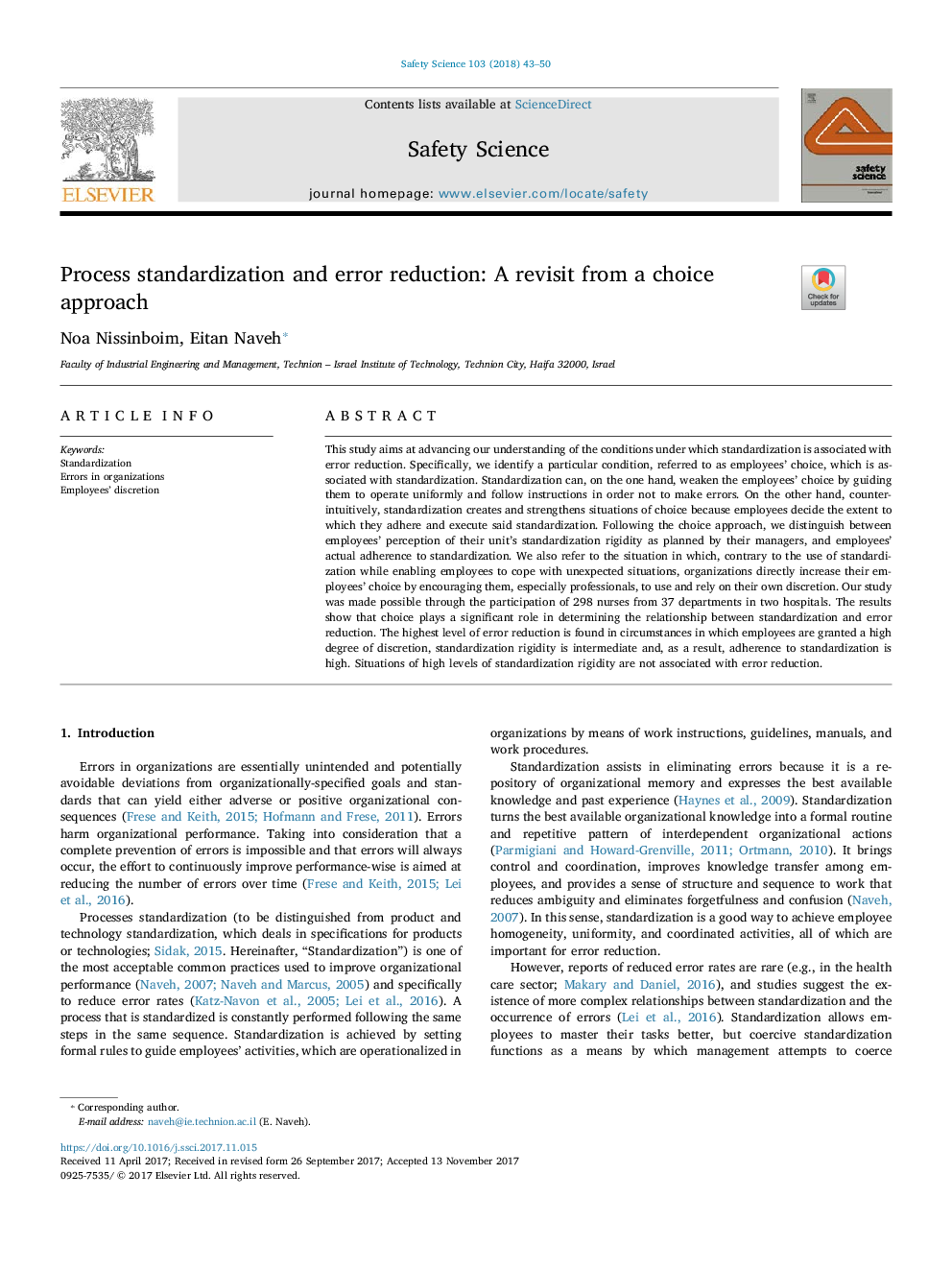| Article ID | Journal | Published Year | Pages | File Type |
|---|---|---|---|---|
| 6975062 | Safety Science | 2018 | 8 Pages |
Abstract
This study aims at advancing our understanding of the conditions under which standardization is associated with error reduction. Specifically, we identify a particular condition, referred to as employees' choice, which is associated with standardization. Standardization can, on the one hand, weaken the employees' choice by guiding them to operate uniformly and follow instructions in order not to make errors. On the other hand, counterintuitively, standardization creates and strengthens situations of choice because employees decide the extent to which they adhere and execute said standardization. Following the choice approach, we distinguish between employees' perception of their unit's standardization rigidity as planned by their managers, and employees' actual adherence to standardization. We also refer to the situation in which, contrary to the use of standardization while enabling employees to cope with unexpected situations, organizations directly increase their employees' choice by encouraging them, especially professionals, to use and rely on their own discretion. Our study was made possible through the participation of 298 nurses from 37 departments in two hospitals. The results show that choice plays a significant role in determining the relationship between standardization and error reduction. The highest level of error reduction is found in circumstances in which employees are granted a high degree of discretion, standardization rigidity is intermediate and, as a result, adherence to standardization is high. Situations of high levels of standardization rigidity are not associated with error reduction.
Keywords
Related Topics
Physical Sciences and Engineering
Chemical Engineering
Chemical Health and Safety
Authors
Noa Nissinboim, Eitan Naveh,
